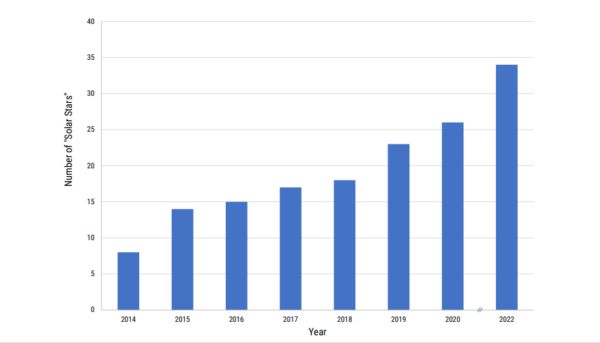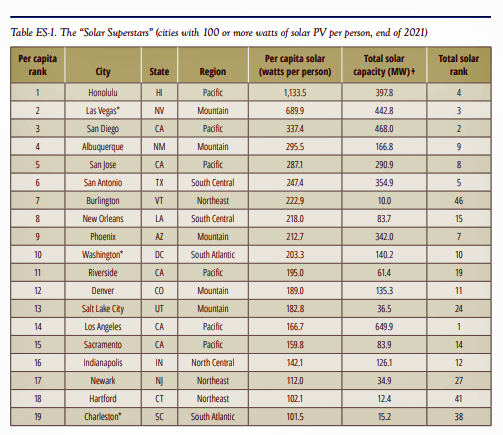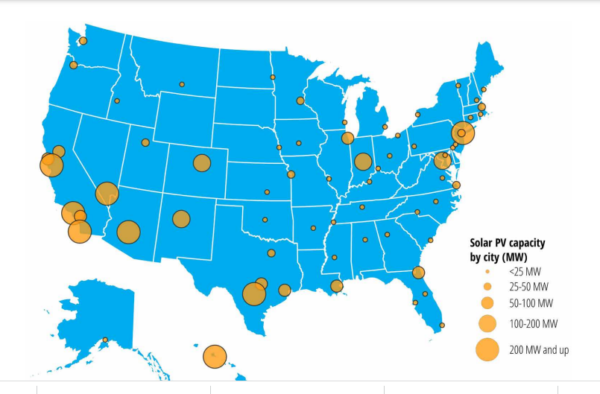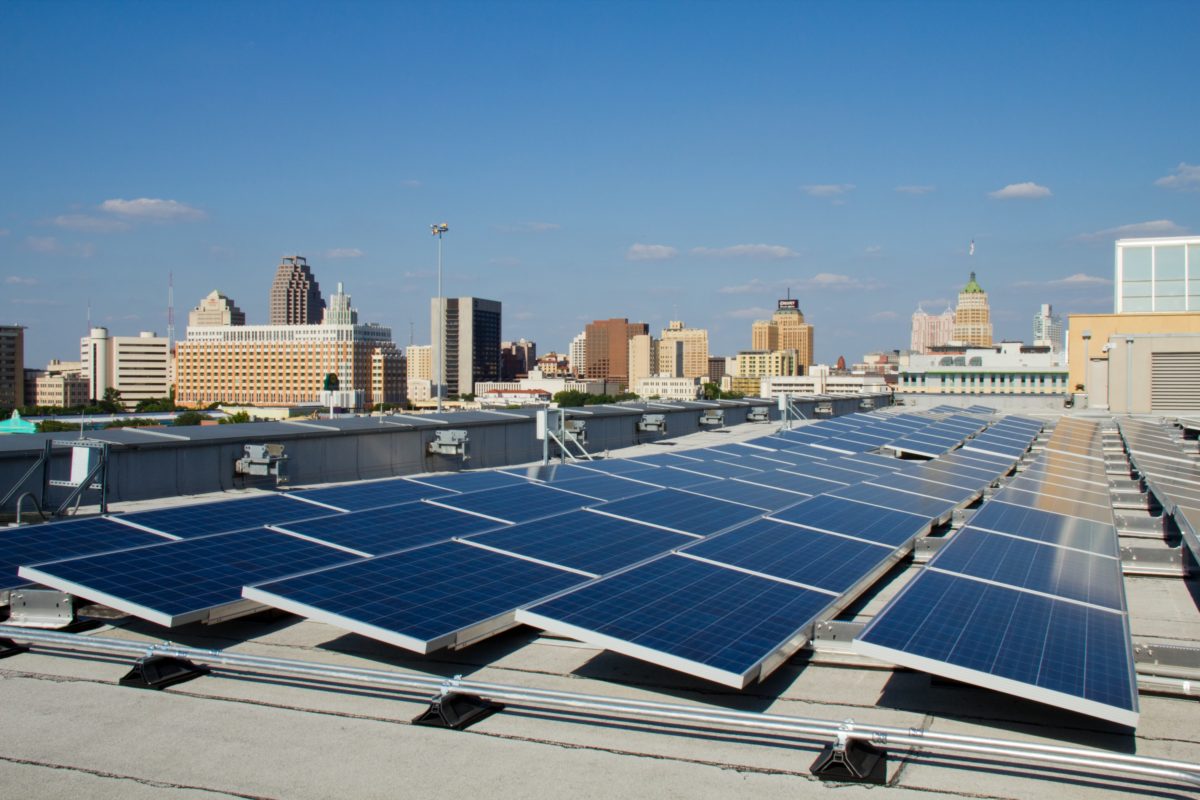The United States currently has 121.4 GW of solar photovoltaic (PV) capacity, producing enough solar energy to power more than 23 million homes, according to the Shining Cities 2022 report released by the Frontier Group and the Environment America Research & Policy Center.
This is the eighth survey of solar energy in the largest cities in the United States, and one encouraging finding is that the amount of solar power currently installed in just nine US cities exceeds the amount installed in the entire United States 10 years ago.

Solar Cities report
Cities with 100 or more watts of solar capacity installed per capita are called the “Solar Superstars” in the report. Honolulu leads the United States for solar power per person among cities surveyed, followed by Las Vegas, San Diego, Albuquerque, and San Jose. All of the “Solar Superstars” have experienced strong and sustained growth in solar energy and are setting the pace nationally for solar energy development.

The “Solar Stars” are the second level, where there are 50 watts per person. The top five Solar Star cities are Austin, TX, Buffalo, NY, Minneapolis, MN, Virginia Beach, VA, and Providence, RI. Eight years ago, when the first Shining Cities report was released only eight of the cities surveyed had enough solar PV per capita to be ranked as “Solar Stars,” but now 34 cities have earned the title.
The third tier are the “Solar Builders,” with between 25 and 50 watts of solar PV installed per person. The top five on this list are Boise, ID, Seattle, WA, Richmond, VA, New York, NY and St. Louis, MO.
And then there are the “Solar Beginners,” which are cities that have installed under 25 watts of solar PV capacity per person. The top five include Oklahoma City, OK, Charlotte, NC, Columbus, OH, Chicago, IL, and Jackson, MS.
Strong policies make solar cities
The report findings suggest that to continue the solar progress made in US cities, strong policies are needed at the local, state, and federal level to make solar easy and affordable. The report advises that local governments should establish 100% renewable energy goals and create roadmaps and programs to meet those goals; adopt the Department of Energy’s SolarAPP+ to streamline permitting; offer virtual net metering, community solar, and third-party financing to expand access to solar; and implement policies for energy storage, EV smart charging and microgrids.

Solar Cities report
State governments are encouraged to adopt and preserve strong interconnection and net metering policies that support, not punish, solar adoption; set a state target for 100% renewable energy; and offer such as rebate programs, green bonds, Commercial Property Assessed Clean Energy (C-PACE) financing, tax credits and financing programs such as low- or zero-interest loans.
The federal government should continue and expand financing support for solar energy, particularly the Solar Investment Tax Credit. The tax credit is currently 26% but the report advises that it should be restored to 30% and extended to apply to energy storage systems, such as stand-alone batteries. Additionally, the US government should continue to support research to drive solar power innovations.
The good news is that of the 56 cities surveyed in the eight years of this study, 52 of them more than doubled their total installed solar capacity. There were 15 cities that increased their capacities tenfold. Ten cities have more solar PV capacity installed than the top city, Los Angeles, did back in 2014. In total, the cities in this report added 1,545 MW of solar capacity over just the past two years. While progress is being made, the study concludes that “even the nation’s leading solar cities have immense untapped solar energy potential”.
This content is protected by copyright and may not be reused. If you want to cooperate with us and would like to reuse some of our content, please contact: editors@pv-magazine.com.









By submitting this form you agree to pv magazine using your data for the purposes of publishing your comment.
Your personal data will only be disclosed or otherwise transmitted to third parties for the purposes of spam filtering or if this is necessary for technical maintenance of the website. Any other transfer to third parties will not take place unless this is justified on the basis of applicable data protection regulations or if pv magazine is legally obliged to do so.
You may revoke this consent at any time with effect for the future, in which case your personal data will be deleted immediately. Otherwise, your data will be deleted if pv magazine has processed your request or the purpose of data storage is fulfilled.
Further information on data privacy can be found in our Data Protection Policy.